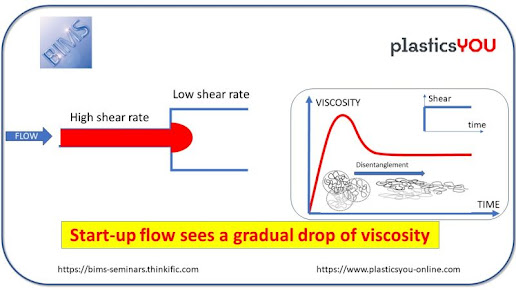A revolutionary helmet that won't turn heads
In what could be the biggest innovation in motorcycle helmet design since the introduction of the expanded polystyrene foam liner, a UK-based technology partnership has developed a new construction that mimics the human skull’s own protection mechanism.
According to the developer of the new “SuperSkin” technology, Dr Ken Phillips, head trauma is the cause of more than 80% of motorcycle accident fatalities. A key factor in these deaths is rotational head injury, serious damage to the brain structure caused by rapid transfer of rotational force to the brain during impact between the helmet shell and surfaces such as the road.
Phillips looked to nature’s own construction of the head when trying to come up with a solution. His SuperSkin concept mimics the “skull and skin” structure of the human head, which allows the skin to slip over the surface of the hard skull to absorb rotational energy.
“While we cannot prevent road accidents altogether, by creating a helmet that replicates a much stronger version of the human skull and skin that protects our brains, we can go a long way to saving innumerable lives,” says Phillips.
Phillips turned to UK-based product design and development company Industrial Design Consultancy (IDC) to turn his concept into a working helmet design.
“Traditionally, motorcycle helmets have been rigid in design. We needed to introduce a dynamic element of movement to dramatically reduce the rotational impact which often causes life-threatening injuries,” says IDC managing director Stephen Knowles.
In the SuperSkin design the hard helmet shell is covered with an outer flexible membrane that is able to stretch and slide over the shell surface to minimise the rotational forces transmitted to the brain.
IDC’s engineering team developed a 1mm-thick thermoplastic polyurethane (TPU) membrane that sits on a specially formulated non-drying polymer gel lubricant. The membrane, which is thermoformed to the shape of the helmet shell, can stretch by up to 700%, allowing it to absorb high levels of energy during accident impact.
The remainder of the helmet construction is conventional. The hard shell can be produced in either composite or injection moulded thermoplastics; the liner is formed from expanded polystyrene.
The design has undergone testing at the UK-based Transport Research Laboratory and in the biomechanics department at the Louis Pasteur University in Strasbourg, France. The results found that the maximum rotational speeds experienced in an accident with the SuperSkin design are one quarter of that measured with standard helmets, while rotational acceleration is reduced by two-thirds. As a result, risk of brain damage is reduced by around 67.5%.
The SuperSkin technology is being incorporated into two new helmets – open face and full-face variants - produced by Lazer Helmets of Belgium. Prices range from €170 to €230. The helmets can be supplied in the natural translucent finish of the membrane or painted using flexible paint.
Meanwhile, Philips, through his company Phillips Helmets, is working with IDC to develop additional applications for the SuperSkin technology in areas such as horse riding.
According to the developer of the new “SuperSkin” technology, Dr Ken Phillips, head trauma is the cause of more than 80% of motorcycle accident fatalities. A key factor in these deaths is rotational head injury, serious damage to the brain structure caused by rapid transfer of rotational force to the brain during impact between the helmet shell and surfaces such as the road.
Phillips looked to nature’s own construction of the head when trying to come up with a solution. His SuperSkin concept mimics the “skull and skin” structure of the human head, which allows the skin to slip over the surface of the hard skull to absorb rotational energy.
“While we cannot prevent road accidents altogether, by creating a helmet that replicates a much stronger version of the human skull and skin that protects our brains, we can go a long way to saving innumerable lives,” says Phillips.
Phillips turned to UK-based product design and development company Industrial Design Consultancy (IDC) to turn his concept into a working helmet design.
“Traditionally, motorcycle helmets have been rigid in design. We needed to introduce a dynamic element of movement to dramatically reduce the rotational impact which often causes life-threatening injuries,” says IDC managing director Stephen Knowles.
In the SuperSkin design the hard helmet shell is covered with an outer flexible membrane that is able to stretch and slide over the shell surface to minimise the rotational forces transmitted to the brain.
IDC’s engineering team developed a 1mm-thick thermoplastic polyurethane (TPU) membrane that sits on a specially formulated non-drying polymer gel lubricant. The membrane, which is thermoformed to the shape of the helmet shell, can stretch by up to 700%, allowing it to absorb high levels of energy during accident impact.
The remainder of the helmet construction is conventional. The hard shell can be produced in either composite or injection moulded thermoplastics; the liner is formed from expanded polystyrene.
The design has undergone testing at the UK-based Transport Research Laboratory and in the biomechanics department at the Louis Pasteur University in Strasbourg, France. The results found that the maximum rotational speeds experienced in an accident with the SuperSkin design are one quarter of that measured with standard helmets, while rotational acceleration is reduced by two-thirds. As a result, risk of brain damage is reduced by around 67.5%.
The SuperSkin technology is being incorporated into two new helmets – open face and full-face variants - produced by Lazer Helmets of Belgium. Prices range from €170 to €230. The helmets can be supplied in the natural translucent finish of the membrane or painted using flexible paint.
Meanwhile, Philips, through his company Phillips Helmets, is working with IDC to develop additional applications for the SuperSkin technology in areas such as horse riding.


Comments
Post a Comment